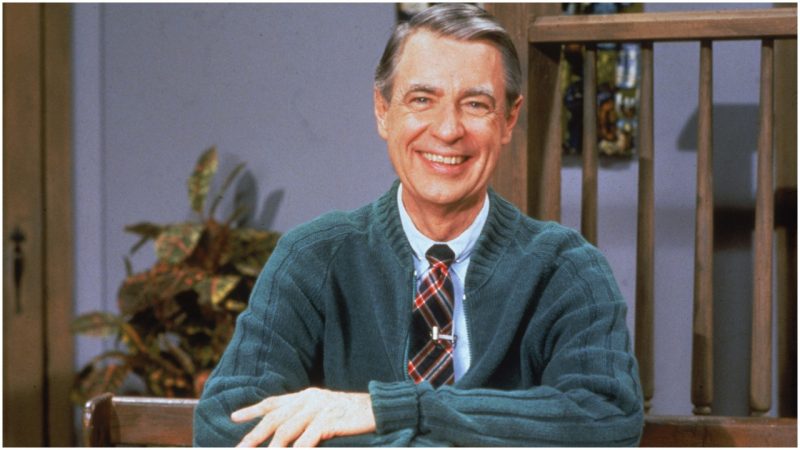In 1987 Fred Rogers and his team went on a remarkable journey. They were leaving the cosy TV set of Mister Rogers’ Neighborhood and trading net curtains for The Iron Curtain.
This unassuming gentleman in his cardigan and tennis shoes, so beloved of U.S. audiences, was in many ways a definitive American. At that point the show had been running for over 20 years, and was set to last more than a decade after.
Mister Rogers, a gentle Republican, represented a wholesome slice of life which for some was rather bland.
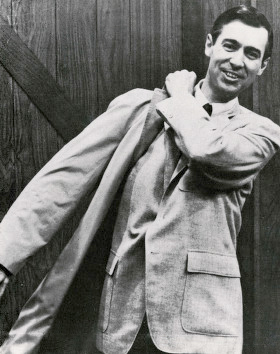
In an article looking at new documentary Won’t You Be My Neighbor, The Telegraph writes that “Mister Rogers’ Neighborhood – there’s no getting around it – was as square as square could be… In one episode, they offered to give the children a sense of how long a minute was. They set an egg timer, and just sat there in silence, on air, for a whole minute.”
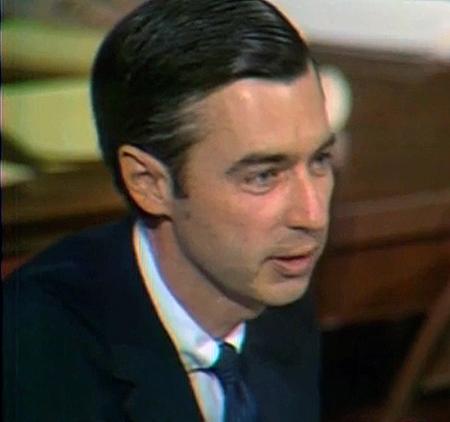
His presence in Red Square suggests a truly strange chapter in the history of American television and, as some of his Soviet hosts suspected but was never confirmed – espionage.
Yet Mister Rogers was merely doing what he’d always done. Reaching out the hand of friendship in his own particular way, accompanied by the likes of puppet Daniel Striped Tiger and the very human deliveryman Mr McFeely, played by David Newell.
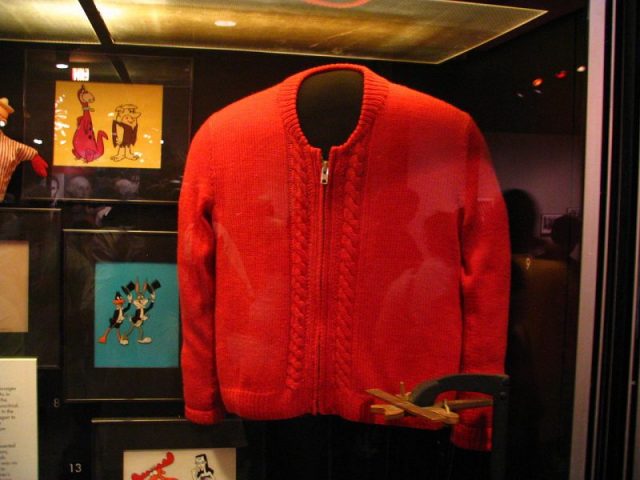
Newell was also Rogers’ PR man, and it was him who’d suggested the Russian adventure. Their destination was Spokoinoi Nochi, Malyshi, which translates as Good Night Kiddies. Like Mister Rogers’ Neighborhood, the series was a stalwart of national television that had been entertaining children since the Sixties.
The New York Times reported on the junior version of East meets West, describing the Russian program as “a mixture of homey morals about manners and kindness, and creative animation involving everything from clay figurines to textured puppets that live out Russian fairy tales, old and new.”
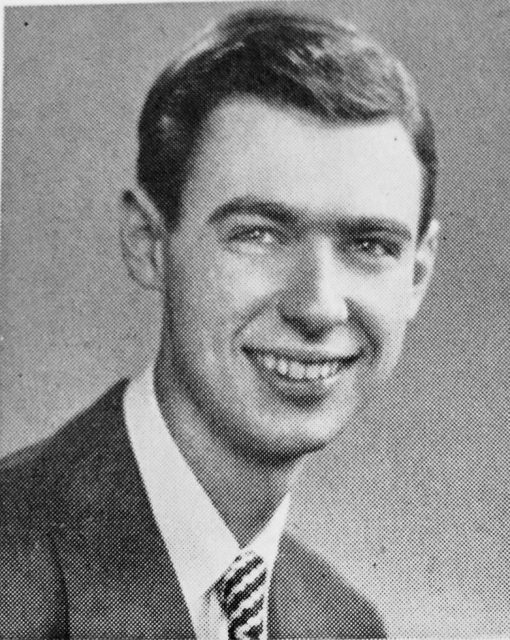
Legendary journalist Ted Koppel had pointed out the similarity, inspiring Newell to mention a crossover to producers. And so Mister Rogers went to meet presenter Tatyana Vedeneyeva and her friends like Khryusha the piglet and Styopa the rabbit.
Vedeneyeva returned the favor by guesting in Mister Rogers backyard. They didn’t end the Cold War but it was still a significant moment in TV history. Mister Rogers had entered an exclusive zone and overall things went smoothly.
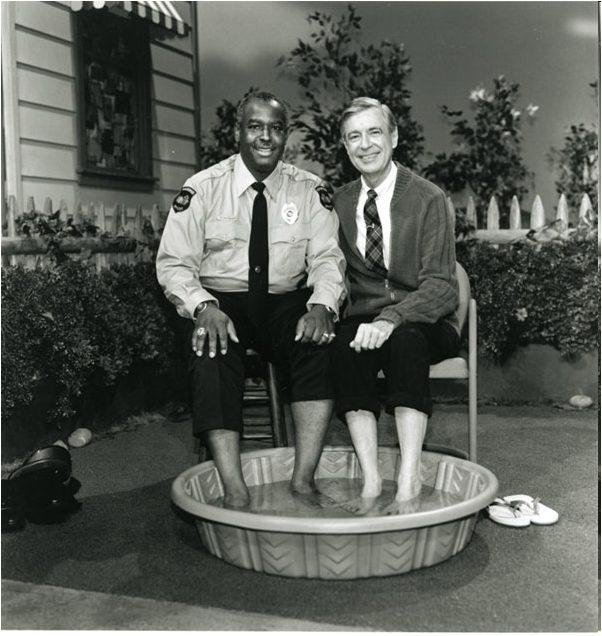
That isn’t to say there weren’t bumps in the road. Some initial Moscow frostiness was reportedly thawed when Rogers began playing with Daniel the Tiger during talks. And when the crew wanted to film at a Russian doll factory the request was firmly denied.
Producer Margie Whitman revealed to the Times, “They told us why we couldn’t go there, and then said that a few months ago they probably wouldn’t have been able to give us the real reason.”
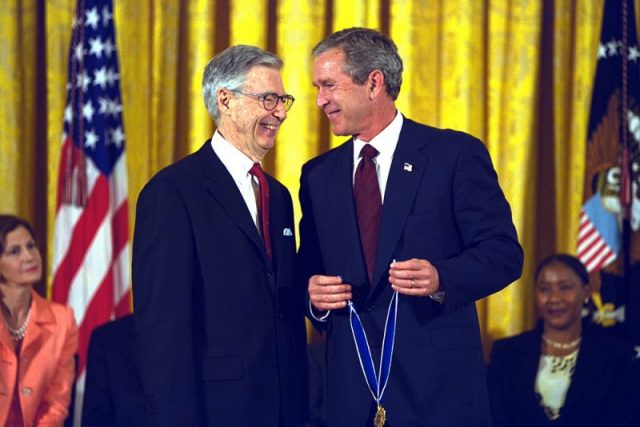
A key reason Rogers was granted permission could have been his relative inconspicuousness. Despite being part of American family life for decades, his profile outside the Land of the Free was pretty low.
The Telegraph comments, “in the pre-internet age, even while soap operas, crime shows and sitcoms criss-crossed the Atlantic, children’s programming seldom traveled… Yet Fred Rogers, who died in 2003, was a figure of titanic influence on several generations of American children.”
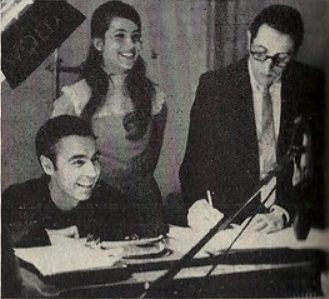
Mister Rogers’ Neighborhood lasted for 912 episodes. The show and its central figure arguably lacked pizazz, though it did have an aspiring performer named Michael Keaton working behind the scenes.
“[He] was one of the nicest, authentically good people you’ve ever met,” Keaton said in a 2014 ABC News interview. “Really good dude [with] kind of a sneaky, sly great sense of humor.”
In covering Won’t You Be My Neighbor, The Telegraph wrote, “Its subject was a man who, as (director Morgan) Neville tells me, loved dirty jokes but would never tell one himself.”
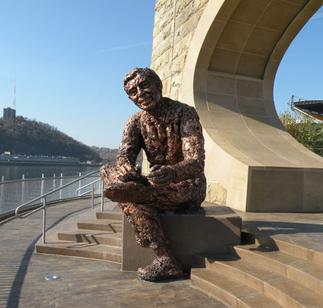
Rogers sometimes used his familiar and trusted corner of the Public Service airwaves to highlight important issues. He would keep youngsters up to speed with current events, tackle thorny topics such as death and challenged racism.
His legacy has its detractors, with some claiming “the entitlement and rage of the modern American adult is directly linked to Fred Rogers; that he’s the father of ‘generation snowflake.’”
https://www.youtube.com/watch?v=FL3xSctTB5c
For Neville however, he’s a voice the American public needs. He made his documentary to promote that message of dignified conduct to the world. Neville wondered “Where’s this voice in our culture today? Where’s this voice advocating for civility and empathy and these kinds of things which are so rare. It was not a nostalgic instinct at all: it was how do I get this voice into 2018?”
The forthcoming movie You Are My Friend, starring Tom Hanks as Rogers, should promote the show in a way it never managed back in the day. And if viewers dig a little deeper, they’ll see a lot more than just a man in a cardigan.
